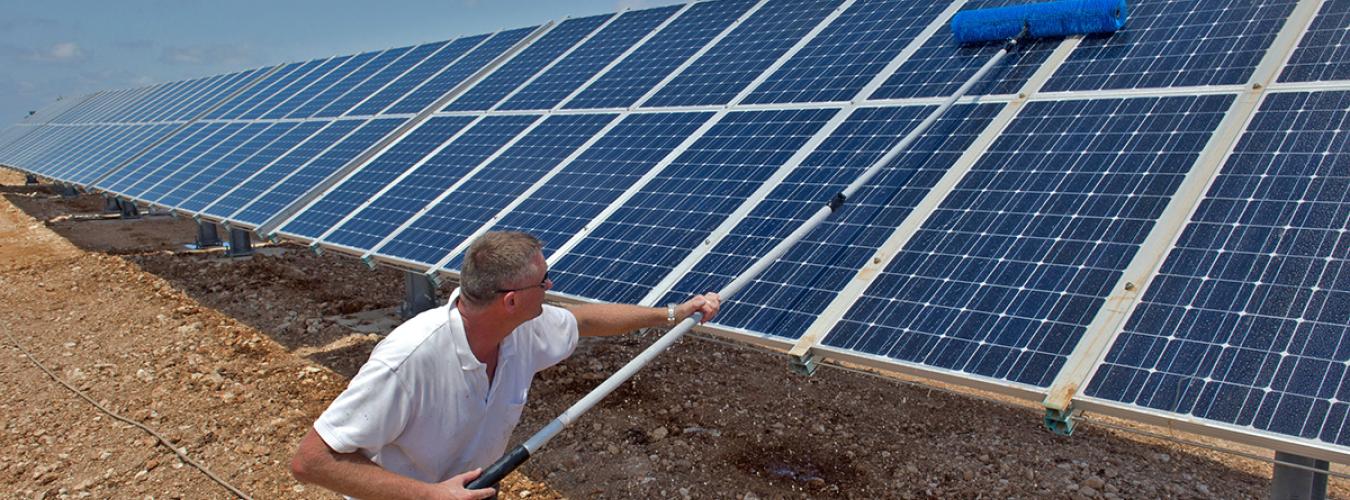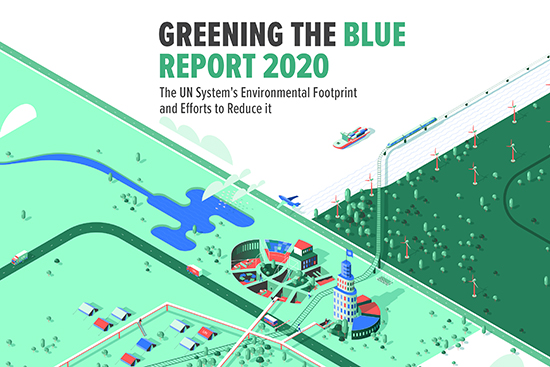
A climate neutral UN
The goal of the 2015 Paris Climate Change Agreement is to limit global warming. This goal requires that we achieve a climate neutral world by the second half of this century. Climate neutrality means living in a way that produces no net greenhouse gas (GHG) emissions.
In 2007, the UN System began working towards becoming climate neutral. Under the leadership of then Secretary-General Ban Ki-moon, at a 2007 meeting of the UN System Chief Executives Board for Coordination (CEB), the Executive Heads of UN agencies, funds and programmes committed to move their respective organizations towards climate neutrality, and developed the UN Climate Neutral Strategy, which highlights the advantages of harmonization.
At the 2007 CEB meeting, the Executive Heads of UN agencies, funds and programmes committed to:
- Estimate the greenhouse gas emissions of UN system organizations consistent with accepted international standards;
- Undertake efforts to reduce greenhouse gas emissions;
- Analyze the cost implications and explore budgetary modalities of purchasing carbon offsets to eventually reach climate neutrality.
Since that 2007 meeting, the UN System has been taking environmental sustainability into account in the operation of its facilities. The United Nations Environment Programme now annually collects and analyzes information provided by UN System entities on their environmental impacts and publishes this data in its Greening the Blue report. The Greening the Blue Report for 2020 covers emissions for 2019; therefore, the effects of the COVID-19 pandemic on travel and facilities’ emissions are not yet visible in the reported data and will not be until 2021.
The 2020 Report found the United Nations System generated around 2 million tonnes of CO2eq last year. (CO2eq includes carbon dioxide and other greenhouse gases). Forty-five per cent of all emissions came from staff air travel. Another 12 per cent came from other forms of transport and 43 per cent were generated by UN offices, largely through heating, air conditioning and electricity use.
The report also stated that in 2019, the UN System continued its downward trend on emissions generation. With 97% of reported 2019 emissions offset, the UN System is well on track to achieve its goal of 100% climate neutrality of its 2020 footprint. Environmental Governance has also progressed with five additional UN entities advancing in their implementation of environmental management systems.
In 2019, under the leadership of Secretary-General António Guterres, the UN’s Chief Executives Board for Coordination endorsed the first Strategy for Sustainability Management in the UN system, which covers the years 2020-2030. In the 2020 Greening the Blue Report, the Secretary-General stated that:
The emergence of COVID-19 is a stark reminder of how we are all a part of nature and the environment. Just as humanity does not exist in isolation, neither does the United Nations system. Everything we do affects the world around us. We are all part of the global climate crisis, and our efforts to achieve environmental sustainability are essential to tackling it. We must work harder and faster to bequeath a livable planet for this and future generations.


